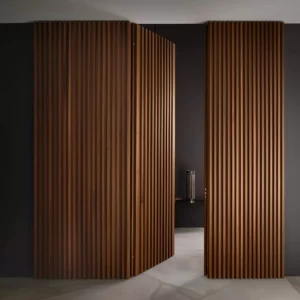Ranking of the 6 best architects in the world by lobo studio.
If you are looking for the best architects in the world, this is the right article for you. We have made an exhaustive analysis of their works and the impact they have had on society.
Let's get started!
FRANK LLOYD WRIGHT (1867 -1959)

"If you invest in beauty, it will stay with you for a lifetime."
Although he never admitted that his work was included within the concept of modern architecture, Lloyd Wright's most iconic projects have been a reference of contemporary art. An example of this could be the Guggenheim in New York (1959), one of his last great buildings that is characterized by its round and curved shapes, which rises to the sky as a large white concrete cylinder.
However, his childhood in a farming family left a strong rural imprint on him, which Frank himself would later capture in a series of prairie-style dwellings, including the Frank Lloyd Wright Home and Studio (1898), his family home in the state of Illinois, USA, and today declared a National Historic Landmark.
In total, the American designed more than 670 buildings, although there is one that stands out above all is the Cascade House (1937), in Pennsylvania, a reference of modern architecture today. Lloyd Wright's great achievement with this work was to make a perfect composition with the natural environment of large forests surrounding the house. Symbol then of the functional style of the American who described what architecture meant to him: "what has no real use or function should be avoided, giving way to a healthy architecture free of superfluous ornaments". Today, Fran Lloyd is one of the greatest architects in the history of the United States and one of the greatest figures in the world.
ZAHA HADID (1950- 2016)
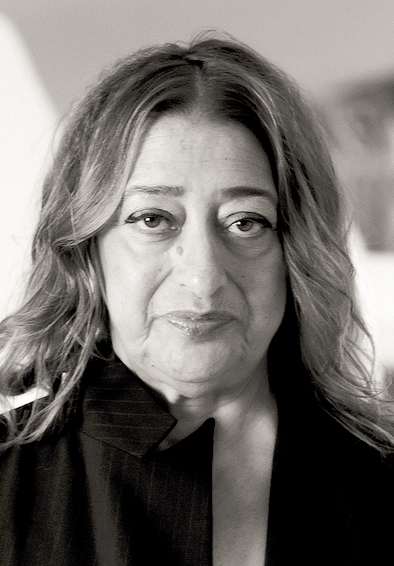
"The essential thing is to have the courage to take risks and develop new ideas."
Of Iraqi origin, she was the first woman, and the only one to date, to receive the most recognized award in the world of architecture, the Pritzker Prize in 2004. There was no glass ceiling that Hadid did not break down despite the obstacles she had to overcome just because she was an Arab woman and a foreigner, as she spent most of her life settled in London.
Her work has always been associated with the deconstructive movement within a model and avant-garde style. A great friend of creativity and originality, her projects were key to achieving a clean and clear transition between traditional architecture and the architecture of the future, even with the critics accusing her of being too extravagant in her craft. However, because she was too daring, many of her designs were not carried out, especially at the beginning of her career, back in the 80s and 90s. It was then that she was nicknamed 'paper architect'. A nickname that even the specialized critics would dismiss years later for 'lady of architecture'.
No work represents his personal stamp more than the London Olympic Aquatics Center, built especially for the 2012 Olympics in the English capital. Years before, he had already experienced what it was like to design projects for major events. In this case it was in 2008 when he was commissioned to design the Bridge Pavilion for the Specialized Exhibition in Zaragoza. Both works are characterized by their white color and curvilinear shapes. However, overlapping cubic shapes have also been a recurring element as can be seen in both the Rosenthal Contemporary Art Center in Ohio and the National Museum of the Arts of the 21st century in Rome.
FRANK GEHRY (1929 - )
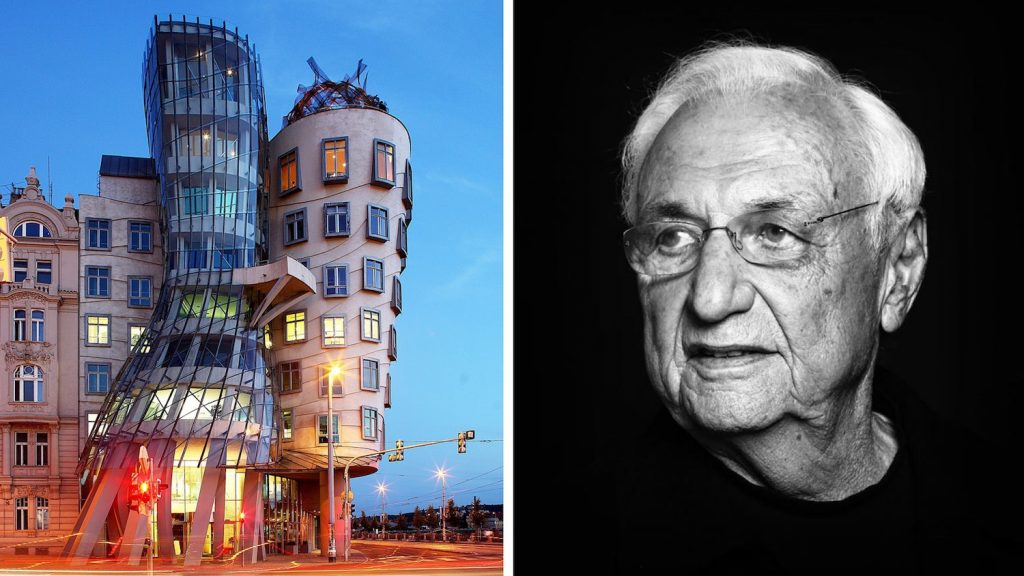
"Cities have to have icons. Libraries, hospitals, museums. A hundred years from now, people will see them and say, 'What is that?' And they'll think: it's art. "
Despite his 92 years, he is one of the few most famous architects in the world who is still active. Known as 'the architect of forms', his work is a clear representation of what it means to be a sculptor and an architect at the same time. His projects are recognized even by the non-specialist public thanks to their strange geometric forms that, in many cases, are superimposed one on top of the other.
Canadian by birth, in his years of studies, Ghery was already an admirer of another of the greats, Le Corbusier (we also talk about him below), from whom he extracted the idea of architecture as art, always without losing the functionality of the structure. Although on the other side of the Atlantic, Ghery followed in the wake of Lloyd Wright, and was the designer of the architecture of the Guggenheim in Bilbao, one of his most praised projects. As in almost all his works, the author used a metal facade and oval structures to play with the volume of these and give the building curvilinear forms.
Experts have described Fran Ghery's style as deconstructive for his way of playing with all possible geometric shapes to create an even more complex work. The architect's frequent use of unfinished plywood and the frequent use of metallic materials such as aluminum is noteworthy. Among his best known works are the Walt Disney Concert Hall in Los Angeles, the Wisman Museum of Art in Minnesota and the New York by Ghery skyscraper in the same American city.
RICHARD MEIER(1934 - )

"We must not trust those who presume to be generous with the good of others."
His latest major project, the new luxury residential tower in Taipei, Taiwan, is a pure reflection of the architectural essence of this American architect born in New Jersey. White as the fundamental essence that conveys the purity that Meier believes represents this discipline, and a clean facade with linear clarity formed by two geometric volumes.
Although Richard Meier has always shunned classifications, the truth is that his style could be included within the avant-garde and minimalist, always seeking environmental balance with the environment. On many occasions the author has acknowledged that this last influence comes from other great architects (included in this list) such as Le Corbusier and Lloyd Wright. Although, unlike them, the American has dedicated his life to residential projects, especially exclusive houses, and museums. One of the most important is the Macba Museum of Contemporary Art, in the Raval district of Barcelona, which was a revolution for the area due to the arrangement of curvilinear forms both exterior and interior.
However, Meier has also dedicated his work to projects related to religion, such as the Jubilee Church in Rome, built with prefabricated concrete panels, a bastion par excellence among the materials most used by the New Jersey architect. In the 1970s, Richard was included in the list of the New York Five, along with four other famous architects, and throughout his career he has been recognized with various awards, including the Pritzker Prize and the Gold Medal of the American Institute of Architects.
LE CORBUSIER(1987 - 1965)
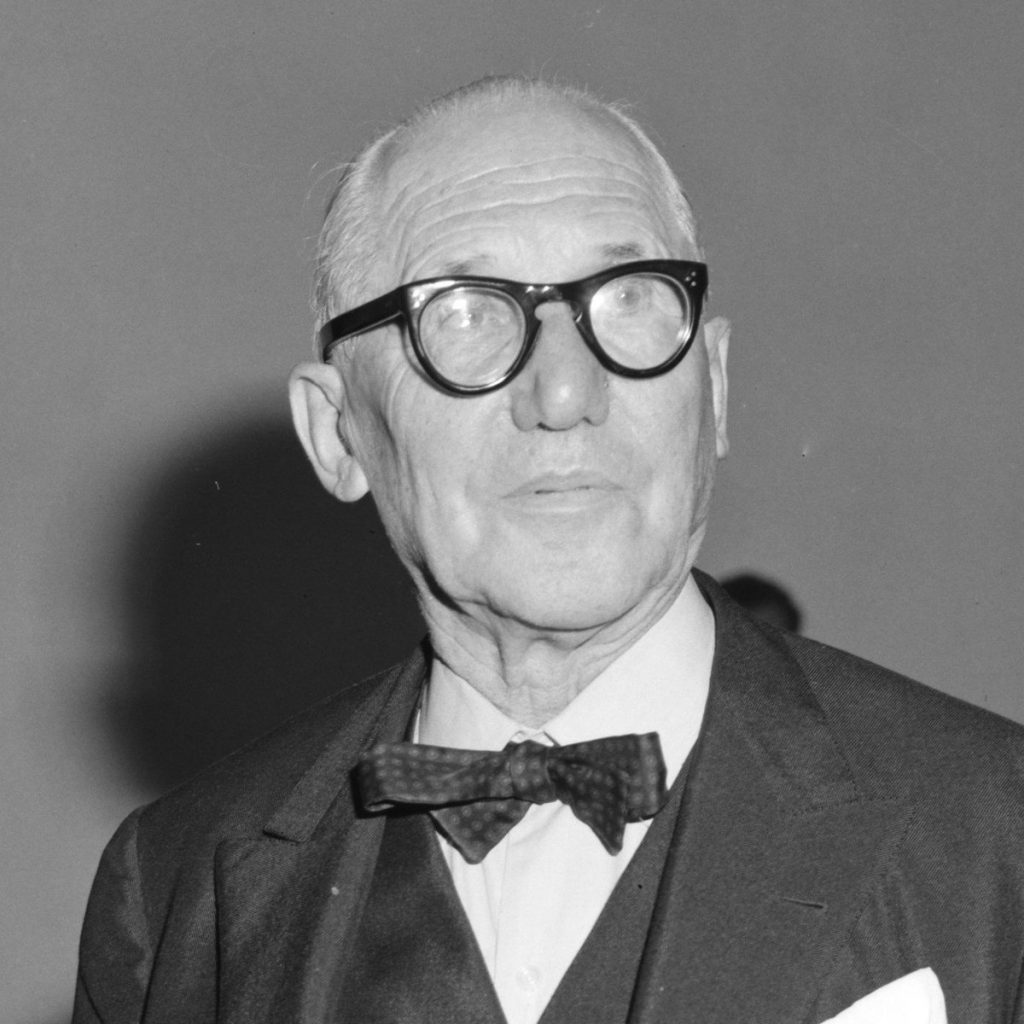
"Geometry will solve the problems of architecture."
Swiss by birth, his real name is Charles-Édouard Jeanneret-Gris, although he is known worldwide as Le Corbusier, or 'the father of modern architecture'. Although he had no specific training in the discipline and did not study architecture, this did not prevent him from becoming one of the great architects of the 20th century.
He began his professional career with Charles L'Eplattenier, a pioneer of Art Nouveau in Switzerland and renowned painter, who brought him closer to the visual arts: painting, sculpture, design, architecture and letters. Because Le Corbusier was also a great man of letters who gained fame as a polemicist with writings and theoretical contributions on architecture. In this discipline he stood out, above all, for his never-before-seen functional and modern style. Le Corbusier's active period was the first half of the twentieth century, a period in which architecture had not yet evolved as we know it today: simplicity, without any ornamentation.
So much so that Le Corbusier would write down his "five points of a new architecture". It begins with the exposition of the 'first floor on pilotis', for a better connection with cars. His second point is 'the free plan' for each architect to decide where to put the enclosures regardless of the next level. All from an independent structure supported by pillars. Thirdly, 'the free façade', as a structure independent of the structure of the house itself. In this sense also raises the idea of 'the elongated window' so that it can occupy the entire width of the building and can increase natural light. Finally, 'the garden terrace', which in this case the Swiss emphasizes should be located on the roof of the building.
All his works are collected in a single set, 'Architectural Work of Le Corbusier - Exceptional Contribution to the Modern Movement' declared as a cultural property within the World Heritage.
MIES VAN DER ROHE (1886 - 1969)
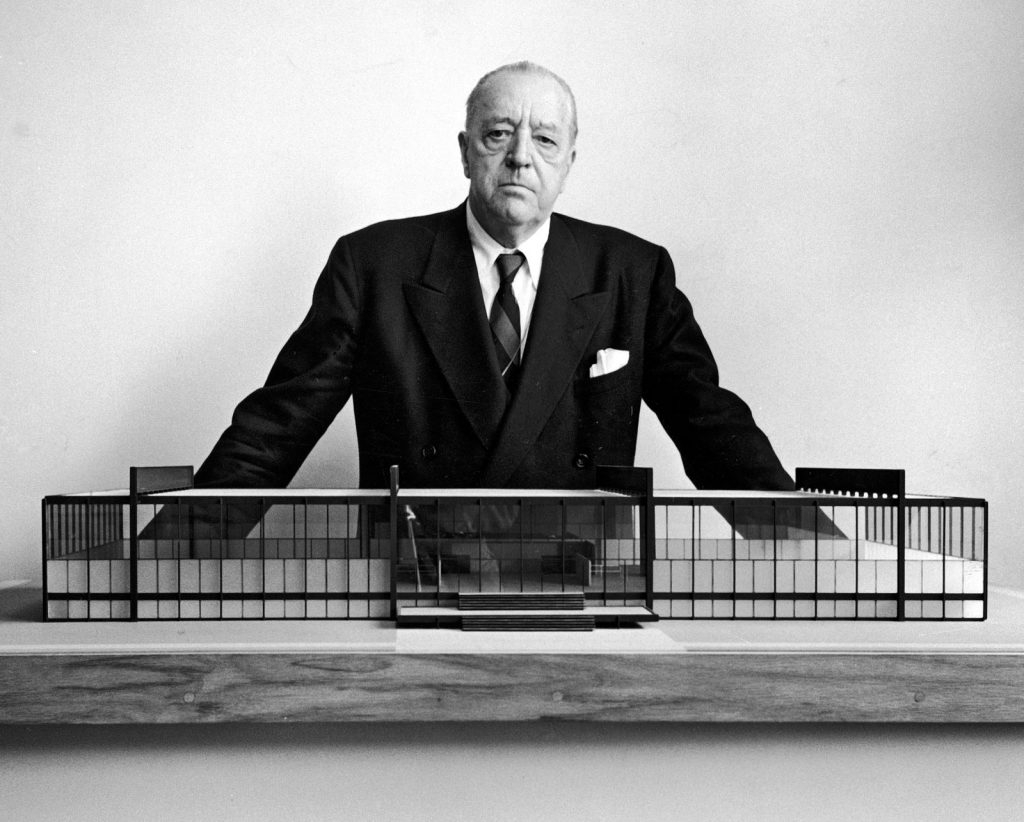
"Less is more."
Named Ludwig and like Beethoven, he was also a pioneer in his discipline and time. With German roots, he had to emigrate to the United States in order to develop all the creativity that he could not at the Bauhaus school in Germany, where he was the director.
Once on the other side of the pond, Van der Rohe became a benchmark within the Modern Movement that stripped architecture to reduce it to two words: simplicity and clarity. His works, more linked to proportions and elegance, showed the facades without any regret, and without hiding them, through a structure of stability and functionality. The Seagram Tower, in New York, built in 1958, is the maximum icon of his work, where the container and not the contents stand out. This philosophy of style led the German to not establish visible divisions within the space, not even with doors. In this way all the elements would have an established function that added to the whole could bring beauty and clarity.
Although his entire career was devoted to building homes and residential space, he has several works to highlight. Among them is the German pavilion he built for the International Exposition in Barcelona in 1929, which can still be visited (a replica) in Barcelona. The New National Art Gallery in Berlin, 1968, also bears the signature of the German: a large stone surface covered by a metal structure and supported by pillars and a glass enclosure. Pure Van der Rohe stamp.
If you want to know more articles about top architects of the moment in Spain I recommend this one.




